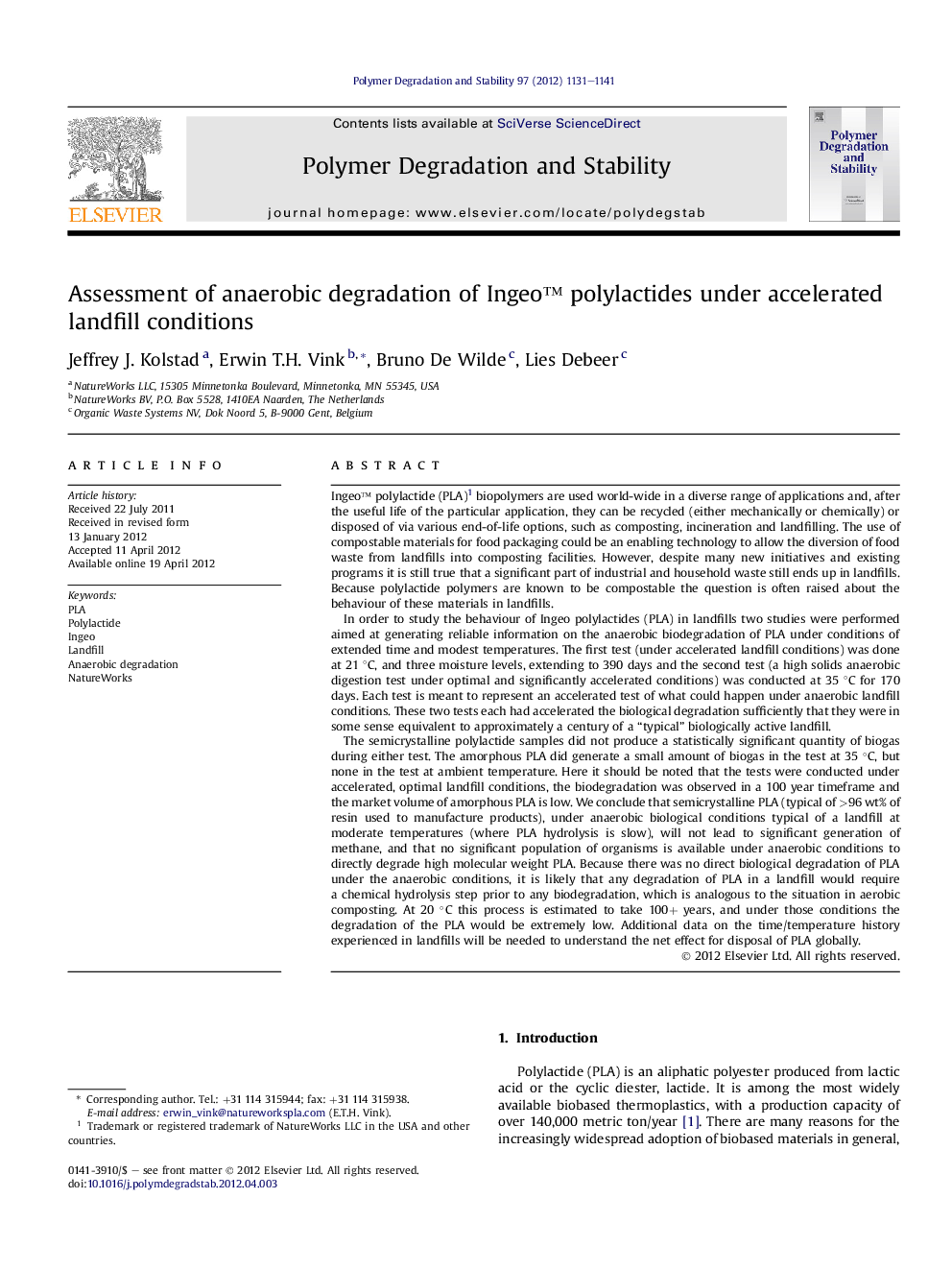| Article ID | Journal | Published Year | Pages | File Type |
|---|---|---|---|---|
| 5202773 | Polymer Degradation and Stability | 2012 | 11 Pages |
Abstract
The semicrystalline polylactide samples did not produce a statistically significant quantity of biogas during either test. The amorphous PLA did generate a small amount of biogas in the test at 35 °C, but none in the test at ambient temperature. Here it should be noted that the tests were conducted under accelerated, optimal landfill conditions, the biodegradation was observed in a 100 year timeframe and the market volume of amorphous PLA is low. We conclude that semicrystalline PLA (typical of >96 wt% of resin used to manufacture products), under anaerobic biological conditions typical of a landfill at moderate temperatures (where PLA hydrolysis is slow), will not lead to significant generation of methane, and that no significant population of organisms is available under anaerobic conditions to directly degrade high molecular weight PLA. Because there was no direct biological degradation of PLA under the anaerobic conditions, it is likely that any degradation of PLA in a landfill would require a chemical hydrolysis step prior to any biodegradation, which is analogous to the situation in aerobic composting. At 20 °C this process is estimated to take 100+ years, and under those conditions the degradation of the PLA would be extremely low. Additional data on the time/temperature history experienced in landfills will be needed to understand the net effect for disposal of PLA globally.
Related Topics
Physical Sciences and Engineering
Chemistry
Organic Chemistry
Authors
Jeffrey J. Kolstad, Erwin T.H. Vink, Bruno De Wilde, Lies Debeer,
